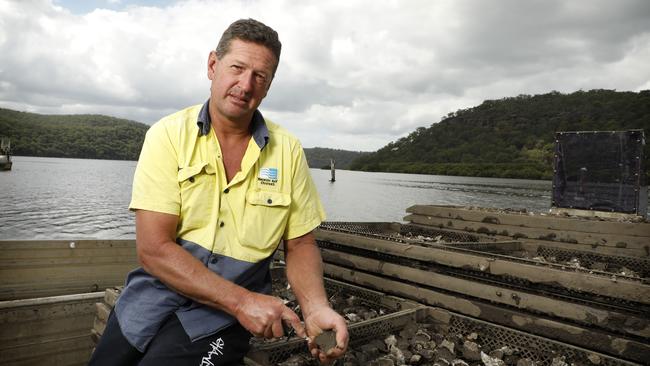Wild weather, floods trigger drought of seafood ahead of Easter weekend
Consumers prepping for Easter celebrations this weekend will face seafood shortages and price hikes as NSW and Queensland fishermen mop up flood damage.

Consumers prepping for Easter celebrations this weekend will face seafood shortages and price hikes as NSW and Queensland fishers scramble to mop up damage from last week’s wild weather and race to get remaining product to market.
Ahead of what is normally one of the largest weekends, producers report battered and destroyed fishing infrastructure, muddy and contaminated estuaries and, in some cases, entire fish stocks completely flushed out to sea.
Oysters, spanner crabs, school prawns, mullet fish and pipis are likely to be in short supply for the next few months as producers wait for river systems to freshen up and stocks to replenish.
The Hawkesbury, Clarence, Macleay, Camden Haven, Nambucca and Manning rivers were inundated with fresh water, triggering the NSW DPI to implement embargoes on trawling and fishing close to river mouths, as fish are known to migrate towards salty water to survive.
The NSW oyster industry has been the hardest hit, with floodwaters sending oyster punts flying down rivers and causing salinity levels to drop, killing millions of oysters, which rely on salty water to feed.
Bruce Alford is an oyster farmer in the Hawkesbury River who has spent the last week loading up his oyster punts and hauling them closer to the ocean in a last-ditch attempt to save his stocks.
Water from the Warragamba Dam is still flowing down the river system, with the fresh water likely to put producers of the Sydney rock oyster out of business for months.
“The oysters will remain closed for a long time, so we won’t know how many have survived,” Mr Alford said. “As long as the water salt levels stay low, we won’t be able to get back to harvesting.”
NSW Farmers Oyster chair Todd Graham said oyster farmers are in daily crisis talks with DPI Fisheries as they wait for the all-clear from authorities to determine whether shellfish and other filter feeders have purged themselves of all contaminants and are safe to eat again.
“We just have no idea the extent of the damage. It could be up to six to eight weeks until we know how many have died,” he said. “It’s going to be a long process.”
NSW Professional Fishers Association CEO Tricia Beatty said the inundation of floodwaters into the river system had likely washed the majority of the iconic school prawns out to sea, ending the season two months early.
Spanner crabs are also in dire straits, with mass kills from a drop in salinity levels.
“You’ve got a huge amount of debris still in all the river systems,” Ms Beatty said. “We’ve seen shipping containers washed down the Hawkesbury, cattle, rubbish, there’s so much of it we can’t go in and work those areas until it’s safe.
“These are hard times for our industry but all our fishermen are trying to access what they can to get what seafood is available for everyone at Easter.”
On the Gold Coast, fishermen are still suffering the brunt of wild weather, with severe winds restricting all fishing for the past 15 days.
Gold Coast Fishery Co-op chair Richard Hamilton said fresh fish on the docks had already sold out. “Easter is normally busy but usually we can cope with the demand,” he said. It’s too hard to keep up supply with the high demand at the moment.”
But for some industries, the inundation of floodwaters could prove cause for celebration.
Some fishers are reporting good catches of large and extra large king prawns in clean offshore waters off the NSW north coast.
Alternative varieties may even experience a surge in demand, as consumers are forced to look elsewhere.
David Doyle, the owner of Sydney’s iconic Doyles seafood restaurants, has turned to the Tasmanian Pacific oyster as he prepares for a bumper Easter weekend. “They’ve still got good amounts of the Pacific oyster at the Sydney Fish Market, but I am sure they will run out soon.”



To join the conversation, please log in. Don't have an account? Register
Join the conversation, you are commenting as Logout